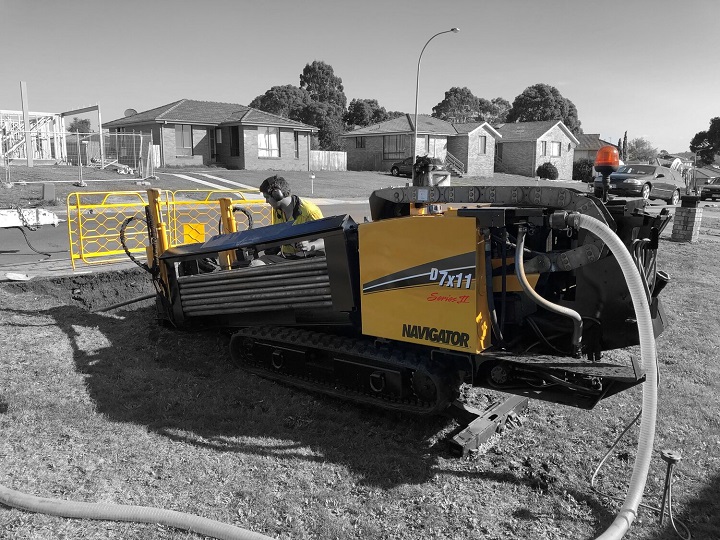 Maintaining underground infrastructure is a major challenge for municipalities and businesses alike. When it comes to repairing or replacing underground pipes, traditional methods often require significant excavation, which can be time-consuming, disruptive and costly. Fortunately, there are trenchless methods available that offer a more efficient and cost-effective solution. This article will discuss some of the most common trenchless methods for new installation and restoration of underground pipes as explained by boring pipe suppliers.
Maintaining underground infrastructure is a major challenge for municipalities and businesses alike. When it comes to repairing or replacing underground pipes, traditional methods often require significant excavation, which can be time-consuming, disruptive and costly. Fortunately, there are trenchless methods available that offer a more efficient and cost-effective solution. This article will discuss some of the most common trenchless methods for new installation and restoration of underground pipes as explained by boring pipe suppliers.
Horizontal Directional Drilling (HDD)
Horizontal Directional Drilling, also known as HDD, is a trenchless method that involves drilling a borehole horizontally underground. The borehole is then enlarged to accommodate the desired size of the pipe. HDD is commonly used for the installation of pipes under rivers, highways, and other obstacles where traditional excavation methods would be impractical. Boring pipes suppliers are the primary source for HDD equipment and materials. HDD is also used for the restoration of existing pipes by inserting a new pipe into the old one.
Auger Boring
Auger boring involves the use of a machine that bores a horizontal hole underground by rotating a spiral auger. The auger creates a borehole that is then used to install the new pipe. This method is commonly used for the installation of gravity sewer, water, and gas pipelines.
Impact Moling
Impact moling involves the use of a pneumatic hammer to create a borehole underground. The hammer is driven into the ground, creating a tunnel that is then used to install the new pipe. This method is commonly used for the installation of small-diameter pipelines under roads, pavements, and landscaping, according to industrial piping companies.
Microtunneling
Microtunneling is a trenchless method that involves the use of a micro tunnel boring machine to excavate a tunnel underground. The machine is controlled remotely and uses a pipe-jacking system to install the new pipe. Microtunneling is commonly used for the installation of sewer and water pipelines.
Pilot-Tube Microtunneling (PTMT)
Pilot-Tube Microtunneling, also known as PTMT, is a trenchless method that involves the use of a pilot tube to create a borehole underground. The pilot tube is then used to guide the installation of the new pipe. This method is commonly used for the installation of sewer and water pipelines by the experts of boring pipes suppliers.
Pipe Ramming
Pipe ramming involves the use of a pneumatic hammer to drive a steel casing through the ground. Once the casing is in place, the new pipe is installed inside it. This method is commonly used for the installation of large-diameter pipelines under roads, railways, and waterways.
Pipe Bursting
Pipe bursting is a trenchless method that involves breaking apart the existing pipe and replacing it with a new one. A bursting head is inserted into the old pipe, and as it moves through the pipe, it breaks apart the old pipe and simultaneously pulls a new pipe into place. This method is particularly useful for pipes that have collapsed or are severely damaged.
Pipe Eating
Pipe eating involves the use of a machine that grinds up the existing pipe and then vacuums up the debris. A new pipe is then installed in the resulting void. This method is commonly used for the rehabilitation of sewer and water pipelines.
Localized Repairs
Localized repairs involve the use of a resin or cement-based material to repair a small section of the pipe. This method is commonly used for the repair of small leaks, cracks, and breaks.
Trenchless Pipe Relining
Trenchless pipe relining involves the use of a resin-coated liner that is inserted into the existing pipe and then cured in place. The liner forms a new pipe inside the old one, sealing off any cracks or leaks. Industrial piping companies say that this method is commonly used for the rehabilitation of sewer and water pipelines.
Sliplining
Sliplining involves the installation of a new pipe inside the old one. The new pipe is typically made of plastic and is slightly smaller in diameter than the old pipe. The space between the old and new pipes is then filled with grout or cement to hold the new pipe in place. This method is commonly used for the rehabilitation of sewer and water pipelines.
Cured-in-Place Pipe (CIPP)
Cured-in-Place Pipe, also known as CIPP, involves the insertion of a flexible liner into the existing pipe. The liner is then inflated, and a resin is applied to the inside of the liner. The resin cures, forming a new pipe inside the old one. This method is commonly used for the rehabilitation of sewer and water pipelines.
Hydro Excavation
Hydro excavation involves the use of high-pressure water and a vacuum to excavate soil around the existing pipe. This method is commonly used for the installation of new pipes, as well as for the repair and maintenance of existing pipes.
Conclusion
Trenchless methods for new installation and restoration of underground pipes have revolutionized the way we approach underground infrastructure maintenance. With the use of these methods, we can now repair or replace pipes with minimal disruption to the surrounding environment and at a fraction of the cost of traditional excavation methods.
If you are looking to install new pipes or repair existing ones, consider working with an industrial piping company that specializes in trenchless methods. They can help you determine the best method for your needs and ensure that the job is done efficiently and effectively. Call International Pipe to get the best supplies.
